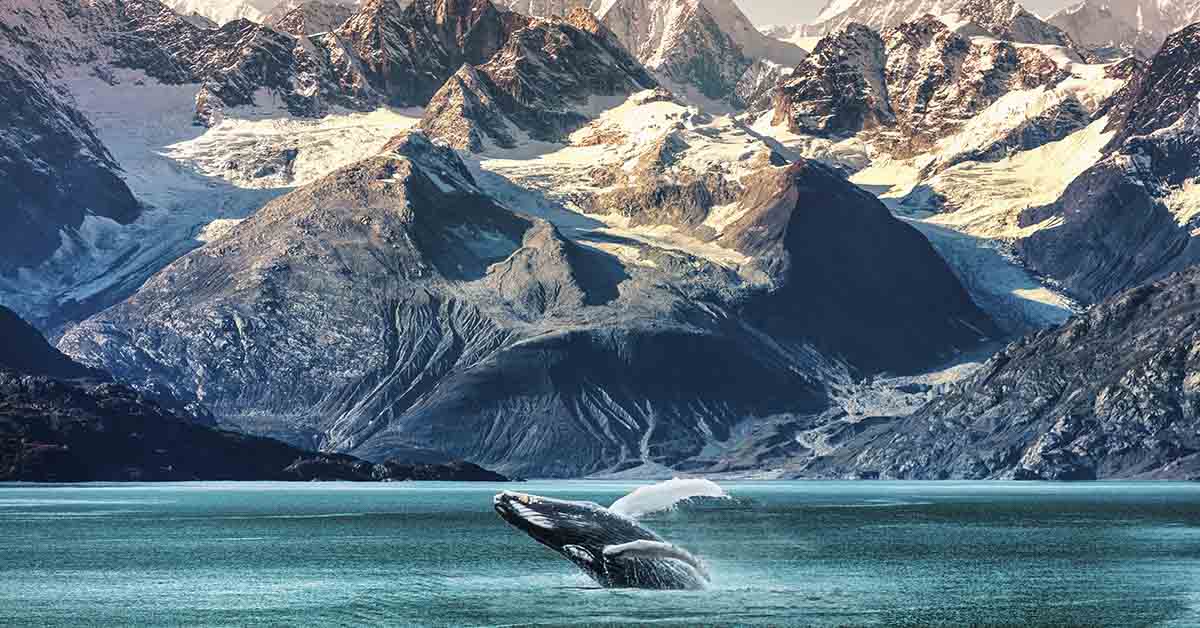A pod of Southern fin whales appeared by ancestral feeding grounds in Antarctica, where they haven’t been seen since the 1970s. The report published in Scientific Reports includes a video of about 150 fin whales feeding near Elephant Island, Antarctica. [1] The researchers say this could indicate the repopulation of fin whale populations that had begun to dwindle due to overfishing for their body fat to make oil. This led to the ban on hunting the species in 1976. It is likely that ban has helped the pods recover their numbers, which could help restore other marine organisms and increase nutrients in the ecosystem.
Fin Whales Return to Antarctic Feeding Areas
Southern fin whales are subspecies of fin whales, which are the second largest in the world, after the blue whale. They live in the Southern Hemisphere and were frequently hunted during the 1800s, especially around their feeding grounds near Antarctica. When the ban came in 1976, overfishing had killed about 700,000 of the species. They seemed to have disappeared from their usual feeding areas.
“They were reduced to 1 or 2% of their original population size,” said Helena Herr, of the University of Hamburg, lead author of the research. “We’re talking about a couple of thousand animals left for the whole southern hemisphere area.”
The authors of the study collected data on fin whales in the Antarctic. They studied helicopter surveillance and video recordings collected during two expeditions, in April 2018 and in March 2019. They researched the species’ populations along 3,251 kilometer search tracks. There, they made special notes of 100 pods of fin whales ranging from one to four members; although eight pods had unusually large groups of up to 150 members that were actively feeding. Keep in mind that previous recordings of feedings include up to thirteen members.
Based on these figures, the authors predicted a future population of 7,909 fin whales in the researched area, meaning a density of 0.09 individuals per kilometer squared. These are high numbers compared to other places populated with fin whales, like southern California, which has about 0.003 whales per square kilometer. But close to Elephant Island is prime grounds for the species with the authors predicting 0.21 whales per kilometer squared, in other words, 3,618 members. [2]
Read: Surfers Risked Their Lives To Save A Crying Baby Whale By Swimming Beside Him For Six Hours…
“It was thrilling, just standing there and watching it”
A team of wildlife filmmakers from the BBC captured the drone footage of the creatures returning to their ancestral feeding grounds. In it, the fin whales charge through the surf, blasting burst of water into the air. “The water around us was boiling, because the animals were coming up all the time,” Herr said. “It was thrilling, just standing there and watching it.”
“I’d never seen so many whales in one place before and was absolutely fascinated watching these massive groups feed,” said Bettina Meyer, co-author, and biologist at the Alfred Wegener Institute. “I ran straight to our monitor, which uses acoustic measuring methods to show the presence and size of krill swarms in the water. And based on the data, we were able to identify the swarms and even see how the whales hunted them.” [3]
Read: Astonishing Moment Humpback Whale Saved Woman From A Shark Attack
A Rebounding Population
According to their research, the authors guess there’s almost 8,000 fin whales in the Antarctic region. The life span of these animals can reach 70 to 80 years. Plus, they produce only one calf at a time, which slows their population recovery. Their increase in numbers is a good sign, and a hopeful one. Today, the International Union for Conservation of Nature lists fin whales as vulnerable and estimates their global population at 100,000.
“Even if we still don’t know the total number of fin whales in the Antarctic, due to the lack of simultaneous observations, this could be a good sign that, nearly 50 years after the ban on commercial whaling, the fin whale population in the Antarctic is rebounding,” said Meyer.
These amazing sea mammals keep an important position in their ecosystem, so their increased numbers indicate the ocean is healthier. They eat krill and defecate near the surface, which breaks down into nutrients that help grow phytoplankton, a vital marine food source. This is why they have Herr’s nickname of “ecosystem engineers”. Her next plan is to find and research unknown whale breeding grounds. [4]
Keep Reading: A Talented Photographer Captured the Rare Scene of a Pod of Ten 40 ft Long Sperm Whales Sleeping Vertically
Sources
- “Return of large fin whale feeding aggregations to historical whaling grounds in the Southern Ocean.” Scientific Reports. Helena Herr. July 7, 2022
- “Fin whale populations rebound in Antarctic feeding grounds.” Phys Org. Springer. July 7, 2022
- “150 southern fin whales observed feeding together.” Science Daily. Alfred Wegener Institute, Helmholtz Centre for Polar and Marine Research. July 7, 2022.
- “Vast group of southern fin whales filmed feeding in Antarctica, sparking hope of recovery.” The Guardian. Agence France-Presse. July 8, 2022

